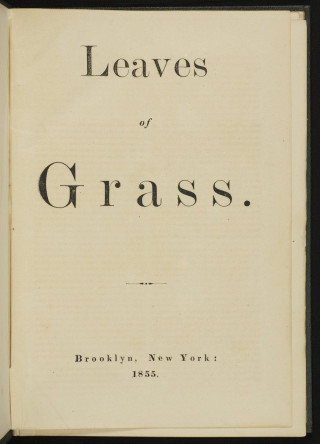This challenge is what inspired him to find his central poetic image for democracy, the grass: “A child said, What is the grass? fetching it to me with full hands.” Whitman says that he can’t and won’t offer a literal answer to the question. Instead he spins into an astonishing array of “guesses.” The grass “is the flag of my disposition, out of hopeful green stuff woven”; it’s “the handkerchief of the Lord…Bearing the owner’s name somewhere in the corners, that we may see and remark and say Whose?”
To Whitman, “the grass is itself a child…the produced babe of the vegetation.” “Tenderly will I use you, curling grass,” he writes. “It may be that you are from old people and from women, and from offspring taken soon out of their mothers’ laps / And here you are the mothers’ laps.” He offers one metaphor for the grass after another, and one feels that he could go on forever.
But mainly Whitman’s grass signifies American equality: “I guess it is a uniform hieroglyphic,/And it means,/Sprouting alike in broad zones and narrow zones,/Growing among black folks as among white,/Kanuck, Tuckahoe, Congressman, Cuff,/I give them the same, I receive them the same.” Whatever our race and origin, whatever our station in life, we’re all blades of grass. But by joining together we become part of a resplendent field of green, stretching gloriously on every side.
Whitman found a magnificent metaphor for democratic America and its people. Like snowflakes, no two grass blades are alike. Each one has its own being, a certain kind of chlorophyll-based individuality. Yet step back and you’ll see that the blades are all more like each other than not. Americans, too, are at least as much alike as we are different, and probably more so. America is where we can be ourselves and yet share deep kinship with our neighbors.
And who are our neighbors? Kanuck, Congressman, Tuckahoe, Cuff—Canadian, legislator, Virginia planter, Black man, all of the teeming blades of grass that we see around us. When you stand back far enough, you can’t see any of the individual blades, but look closer and there they are—vibrant and unique, no two alike. We say “e pluribus unum,” from many one. But who could have envisioned what that would look like and how it would feel before Whitman came along?
